



Trying to succeed on YouTube can be tiring, and with so many people looking to do the same, it becomes difficult to catch a break. It also means that instead of waiting for something to happen, you can take matters into your hands and do everything in your power to give your channel a real shot.
You can do many things like buy real YouTube likes to boost your YouTube channel's standing and improve and SEO to optimize your channel to the max. But there is another critical aspect that you need to keep in mind: to see what the competition is doing and find a way to do this better.
You are probably guessing that here we'll talk about the importance of having an insight into the analytic data YouTube provides, more precisely, the wealth of knowledge you can get by analyzing your YouTube competitors.
The process of analyzing what your competitor channels do is called YouTube Competitor Analysis. For being a success on YouTube, it is not enough to know your own stats and metrics, but those of the competition. It is done by doing YouTube competitor analysis, and via this process, you gain valuable insight into your competitor’s metrics, strategy, content research, and more. By carefully analyzing the data, you can learn a lot about their and your own channel as well. By researching competitive channels, you get a wealth of information to improve your channel and fix things that may not work well for you.
There are many reasons why it would work well for you to analyze the competition on YouTube. Even if you think that doing competitor research is akin to spying on your YouTube competition, there are significant advantages of doing this. Here we explain the main gains from performing YouTube competitor research:
There is no better way to learn what the competition is doing than scrutinize their online behavior. By doing a competitor analysis on YouTube, you can get specific information and details on your competition. Think of it as market research, as it can allow you to learn behaviors that could be helpful when planning your next video or video series. Also, it is a way to see what is currently trending in your target niche, find new video ideas, learn how to optimize your videos and way more. By spying your YouTube competitors, you can keep in step with the hottest trends and use it for your own channel's advancement.
When you see what your competition is doing and analyze their metrics, you can more easily note what is trending at the moment and what the public likes and expects to see. Also, by seeing what your competition is doing, you can most certainly find inspiration for a new video(s).
By analyzing your competition, you can come to a conclusion where your videos underperform. Knowing this can also help you find suitable solutions to remedy this and drive more viewers towards your channel, boosting views, and subscribers. For example, if your competitors have started doing listicle videos that gain many views and comments, you need to consider this seriously.
Sometimes, the number of views and subscribers may seem lagging. For example, your channel has reached a certain number of subscribers, and whatever you do, you can't seem to surpass this number. By doing a competitor analysis on YouTube, you can see what the other channels are doing and then implement it to your channel and earn new subscribers this way.
When researching the competitive channels on YouTube, you will most likely stumble on a channel or two that you've not seen before, but they dabble in the same niche as yours. By taking the time to scrutinize their channel and videos, you are increasing the chances of improving your own YouTube channel. Get creative, reverse engineer their channel, and you can be on the way to increasing the views and subscribers on your channel.
Below are screenshots from two famous competitor channels on YouTube, Jamie Oliver and Laura in the Kitchen.
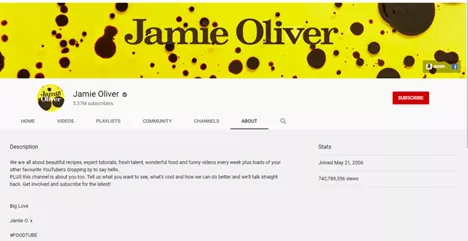

It is not that difficult to find and identify your competitors on YouTube. If you want to become a YouTuber, you need determination, persistence, and creative thinking; you need to involve these traits when researching the competitor channels. You can follow the list below, where we've presented several options that you can use as guidelines:
The most obvious start would be to do a keyword search on YouTube and start from there. Use the most obvious keywords related to your field to begin your research into your competitors. From the offered results, identify the ones that are your actual competition and need to be analyzed further. It can also serve as a way to analyze untapped competitor keywords.
Just like any other social network, YouTube also uses hashtags: The hashtags or #hashtags are put in the video description and can serve as a sort of auxiliary keywords. By clicking on a hashtag, YouTube will take you to posts that have the same hashtag. When searching for competitor channels, you can use the hashtags that you've used in your videos as a start. Use the hashtags on the resulting videos and so on until you have a fair amount of competitor channels lined up for analysis.
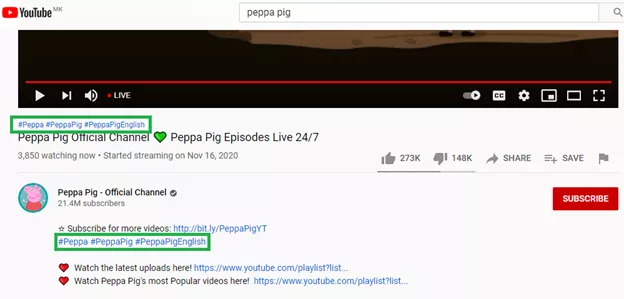
Once a video ends, YouTube's algorithms will suggest similar/related videos. You need to keep an eye on the recommended videos, as YouTube will automatically tell you which channels are your competitors. It is maybe the simplest way to recognize which channel has the most similar topic to yours and produces videos similar to yours. From there, it's up to you to analyze their online behavior and learn to bank on the knowledge.
Now that you've found which channels are your real competitors, it is time to assess and make an in-depth analysis of these channels: You need to keep track of the essential metrics about your competitor channels to determine their strengths and weaknesses and identify their strategy. Later, based on them, you can tweak/change/improve your own channel. Here is what you need to keep in mind when researching and analyzing your competitors on YouTube:
After determining who your real competitors on YouTube are, you need to take a deep dive into their channels and examine the type of content they are posting on their channel. See which of their videos are getting more engagements and views, such as hosting live streams, Q&A sessions, or something similar that catches the audience’s attention.
You can do this by going to a certain YouTuber’s channel page and going to his Videos tab. There, you can filter the videos by “Most Popular” and see which videos got the most views and what type of videos they are - are the live streams? Regular videos? Maybe they’re a part of a series?
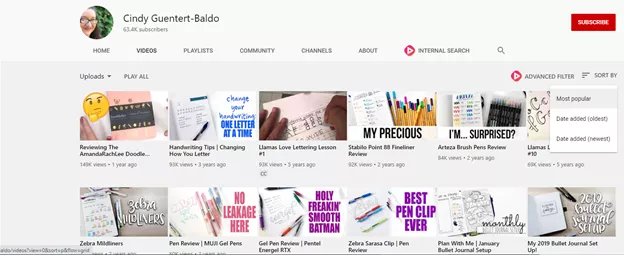
Then you should compare your content to your competitors, and you’ll find out what is lacking in your own YouTube strategy.
You can analyze the keywords used in every YouTube video by using the page source option (Ctrl + U) in the browser you use. To find the keywords, simply:

Using TuBeast Chrome extension you can go to any video page and uncover the keywords used in that video. All you have to do is:
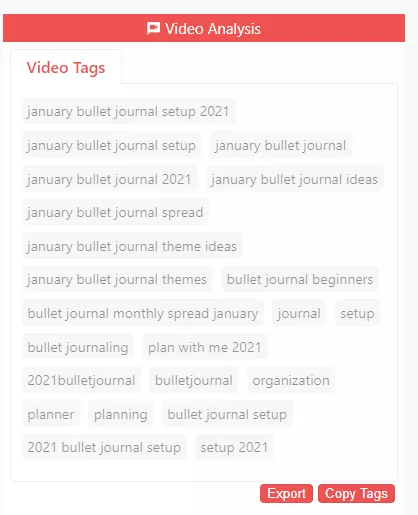
VidIQ’s Chrome extension provides two ways to see keywords:
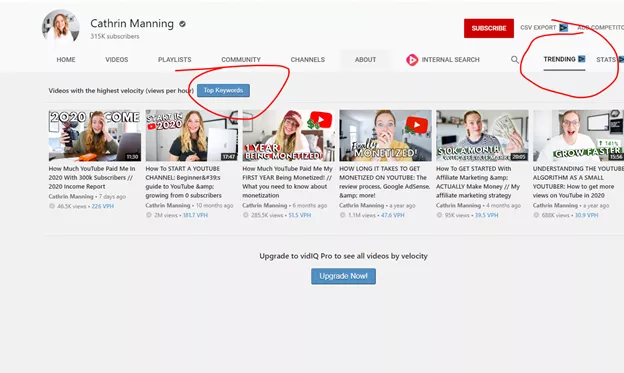
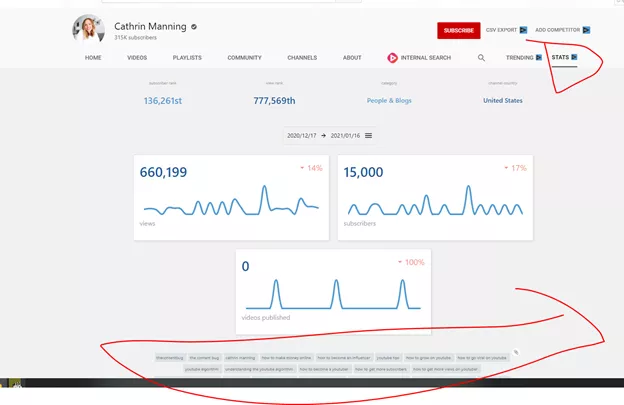
The YouTube channel metrics pertain to the number of videos, subscribers, likes, dislikes, comments, which video performs well, and more. Knowing all of these about your competitors can help you realize where your channel is at the moment. It will also help you understand their strategy, and based on this, tweak and improve your strategy to overcome and outperform them.
VidIQ’s Chrome extension allows you to see all the stats for a specific channel in the Stats tab.
You can find all of these things out by using SocialBlade.com website - Social Blade is a free website that gives you important metrics on any YouTube channel. All you have to do is copy and paste the channel link into the search bar and you’ll be able to see their analytics.
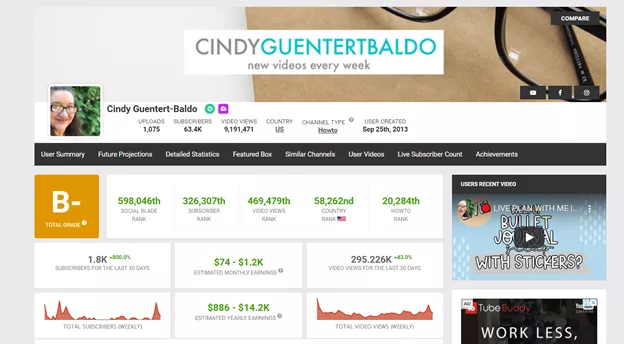
The Detailed Statistics Tab
This tab shows you detailed statistics for the channel you’re investigating. You can see:
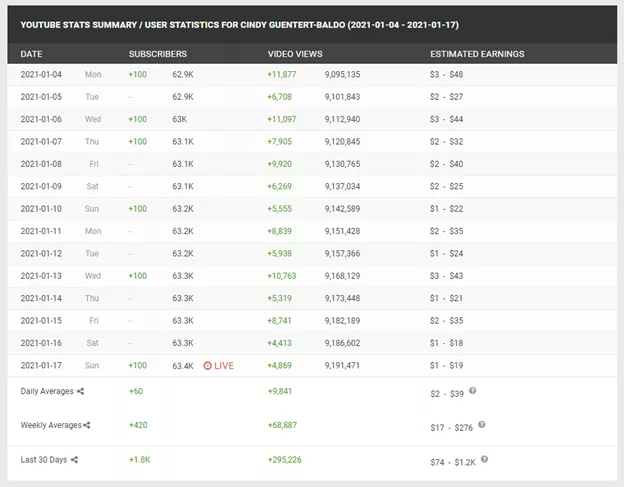
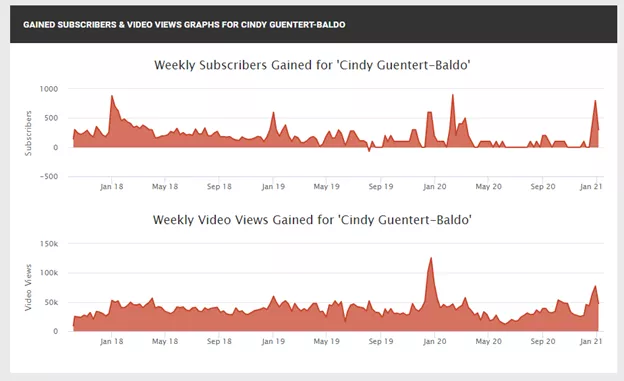
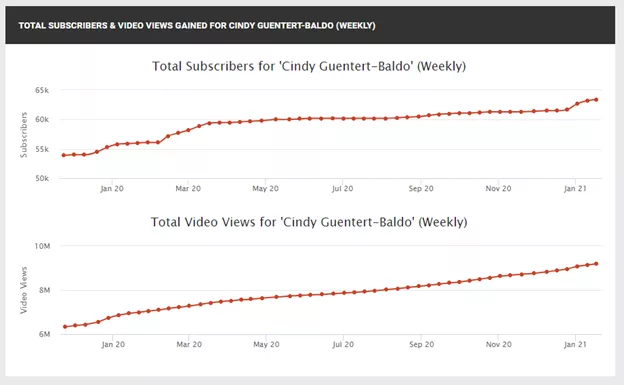
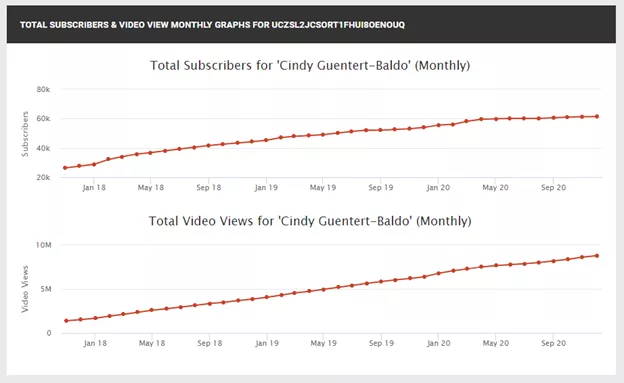
This information can help you recognize trends around the channel’s content and find out what type of content generates the most traffic and conversions - a vital piece of information if you want to learn from your competitors and imitate them.
By analyzing the frequency with which your YouTube competitors upload new videos, you will learn how active they are compared to your activity, especially when competing for the same audience. If they are getting more engagements and uploading more videos per week, you should try to match them. The frequency of new videos is also related to comments, which, as we've shown before, is linked to getting more views and subscribers.
To see how often a user uploads videos to the platform, simply go to that creator’s channel page and click on the Videos tab. Then, sort the videos by “Date Added”.
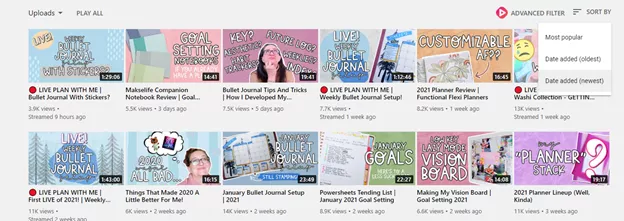
There is no single perfect YouTube channel, which means all channels have a weakness of sorts. After carefully analyzing the competitor channels, their YouTube SEO strategies, their videos up to the tiniest details, like how many cards they use on the end screen, you can most certainly identify some mistakes. Even if it is a minor thing, you can keep it in mind and use this to your advantage in improving your overall YouTube channel strategy.
Another surprising way to find the advantage you need is using Instagram.com - Believe it or not, but you can spy after your competitors on Instagram (if they have accounts) and eventually to grow your YouTube channel with Instagram.
This might mean watching an endless amount of videos, but it’s totally worth it.
Now that we've covered why you need to make competitor analysis on YouTube, it is time to share some of the YouTube SEO tools you can use to do this. When properly used, each of these can provide essential insight into the competition, from which you can learn what to do and what not to do.
TubeBuddy has been around for a while now, and it has become an essential tool for many YouTubers. TubeBuddy is a certified YouTube SEO tool that comes with an extension to Chrome. When you install this tool, you connect directly to your channel's YouTube dashboard and can manage many functions right from the app itself.

The great thing about TubeBuddy is that it allows you to research YouTube video tags and trending topics, essentially YouTube competitor analysis. TubeBuddy offers many features that come with a long list of options to analyze your channel and videos. There are options like Competitor Scorecard, where you see how your channel stands against your competitors in competitor research. Then, the Competitor Upload Alert tells you when your competition has put on a new video. Among the many other tools used for YouTube Competitor Analytics, TubeBuddy has an option named Channelytics, where you get stats and analytics on any YouTube channel drawn from StatFire.
vidIQ is a platform and tool that allows the performing of YouTube analytics. When we say analytics, we mean an in-depth analysis of many different factors that mean the difference between success and flop. vidIQ is used as a Chrome extension, enabling the connection to your YouTube channel.
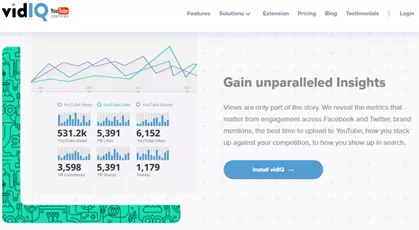
The VidIQ tool has separate tools for the various features, and to analyze your YouTube competition, you can use the vidIQ Competitors Tool. Within this tool, you can add the channels you consider your competitors and make a comparative analysis. vidIQ allows you to compare your channel to any other YouTube channel and identify and analyze their top keywords, see the number of views, and other information like average views per day, average subscriber per day, and more. Among the other vidIQ tools, we need to mention the Trend Alerts for identifying the currently trending keywords and topics and the Compare View tool that compares all the necessary stats to any video from any YouTube channel.
TuBeast is a platform that comes with a Chrome extension with plenty of useful tools for YouTubers. The majority of TuBeast tools are aimed towards SEO optimizing your channel and videos but are not limited to this. TuBeastalso offers tools to conduct unfair market research, otherwise known as competitor analysis.
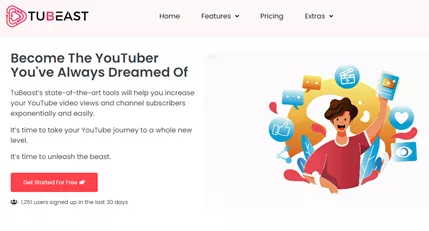
TuBeast has many tools in its arsenal, and they are all at your disposal when you make any analysis on YouTube. Among these tools, we should outline the TuBeast Keyword Tool that analyzes every keyword you have used or plan on using in your videos. Next, the TuBeast Tracker feature helps keep track of trends and topics, the ChannelSight and VideoSight tools, and more. When used correctly, all the TuBeast tools offer excellent insights into your and your competitor's channels. Based on this data, you can make adjustments and improve your own YouTube strategy.
Social Blade is a platform that tracks social media statistics and analytics. They have options for each major social platform, but their most prominent platform is YouTube. The platform comes with a Chrome extension to simplify matters.
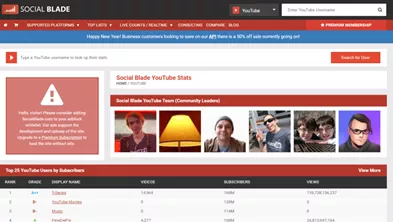
Social Blade provides specialized tools based on AI-supported analytics. The platform gathers data from the public YouTube API but uses advanced analytics methods to display comprehensive results. With Social Blade, you can get metrics for any YouTube channel in the world. You can compare data from up to three YouTube channels simultaneously. The stats for comparison are the number of views, number of subscribers, rankings, growth rate, estimated channel earnings, and future predictions.